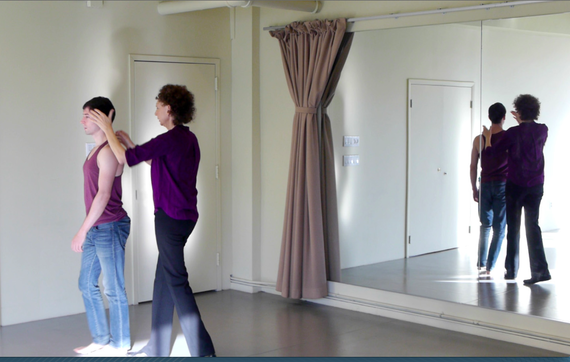Over the years, health and wellness trends have come and gone. People are always eager to try the latest exercise regime or find the quickest way to lose weight, but most methods rarely last long. In a sea of fleeting health fads, let's look at one approach to finding lasting health and overall wellness: the Alexander technique.
The Alexander technique is a practical method for self-improvement through mind/body reeducation. It is studied by Hollywood A-listers, musicians, athletes, and many people seeking to relieve pain or improve general well-being.
Having been around for over 100 years, the Alexander technique's lasting success is credited to a time-tested basis that is in line with our evolved, upright human design. Children, born healthy, move with lightness and ease that we recognize and admire. As life comes along with its many challenges, we tend to respond either by using excess effort and tension or by collapsing and shrinking, and therefore lose our inherent balance and coordination.
The Alexander technique's mind/body lessons (taught one-on-one or in group sessions) can help us regain our inherent skills and effortless ease of movement. It doesn't give you new routines to go through but instead teaches you how to bring more awareness and intelligence to what you're already doing, which is said to result in a general heightening of awareness and consciousness
By studying the Alexander technique you can learn:
- How to sit, stand, walk, breathe, and speak with less effort.
Examples of Using the Alexander Technique in Your Daily Life
The work is simple to perform and discreet enough to practice at any moment of the day so that it is incorporated into everyday life instead of separated from it. No need for spandex shorts, sweat, or equipment. All you need is your own mind, body, and spirit involved in whatever activity you happen to be doing.
I have taught this technique to thousands of students all over the world, and people often ask me, "Should I swim? Or do Pilates? Or yoga?" I answer, "It's not so much what you do but how you do it." For example, in your yoga class, when you do any type of back bend, whether "Cobra" on the floor or "Sun Salutation" while standing, you want to be sure that you lengthen your spine first and then bend your whole spine, not just your lower back. This way you are using one of Alexander's principles, lengthening, to improve whatever exercise you choose to do.
The Alexander technique doesn't call for extreme measures that lead to unattainable results. Rather than only paying attention to your body through exercising for one hour a day and then slumping and ignoring your physical patterns for the other 23 hours, the technique teaches you to bring awareness to your movements throughout the day. You can incorporate simple tips throughout your daily routine to help you achieve your wellness goals.
- You can do awareness exercises that bring conscious attention to how you're using your body while moving or while staying still.
The Staying Power of the Alexander Technique
F.M. Alexander, the technique's founder, was a Shakespearean actor who continuously lost his voice while performing in Australia in the late 1800s. He solved his vocal problem and began to teach his findings in the form of educational lessons, using gently guided hands-on work. A qualified Alexander technique teacher must go through a rigorous three-year training program.
Because F.M. was an actor who improved his voice and theatrical presence, the technique is often utilized by stage and screen performers. Among the many celebrities who benefit from the technique are Leonardo diCaprio, Lupita Nyong'o, Judi Dench, Sting, and many more. There is even a photo of Marilyn Monroe reading F.M. Alexander's first book, Man's Supreme Inheritance.
I have witnessed many moments of transformation with people from all walks of life. Students have reported after learning the work, "I felt a lightness that I never even imagined," and, "My pain of 10 years is gone."
Although Alexander lessons are not therapy, the work can have therapeutic outcomes. In a 2008 study published in the British Medical Journal, the Alexander technique proved to be highly effective in treating back pain. The study results showed 86-percent improvement for low back pain after 24 lessons in the Alexander technique alone. Participants went from 21 days of pain a month down to only three days.
For almost 40 years I have been studying, exploring, teaching, and marveling at the benefits of the Alexander technique. My new book, The Actor's Secret, combines the technique with breathing coordination and Somatic Experiencing® to present a revolutionary new approach to performance training as well as everyday well-being.
Betsy Polatin is a movement and breathing specialist, Alexander technique teacher, master lecturer at Boston University, and the author of The Actor's Secret, distributed by Random House.
